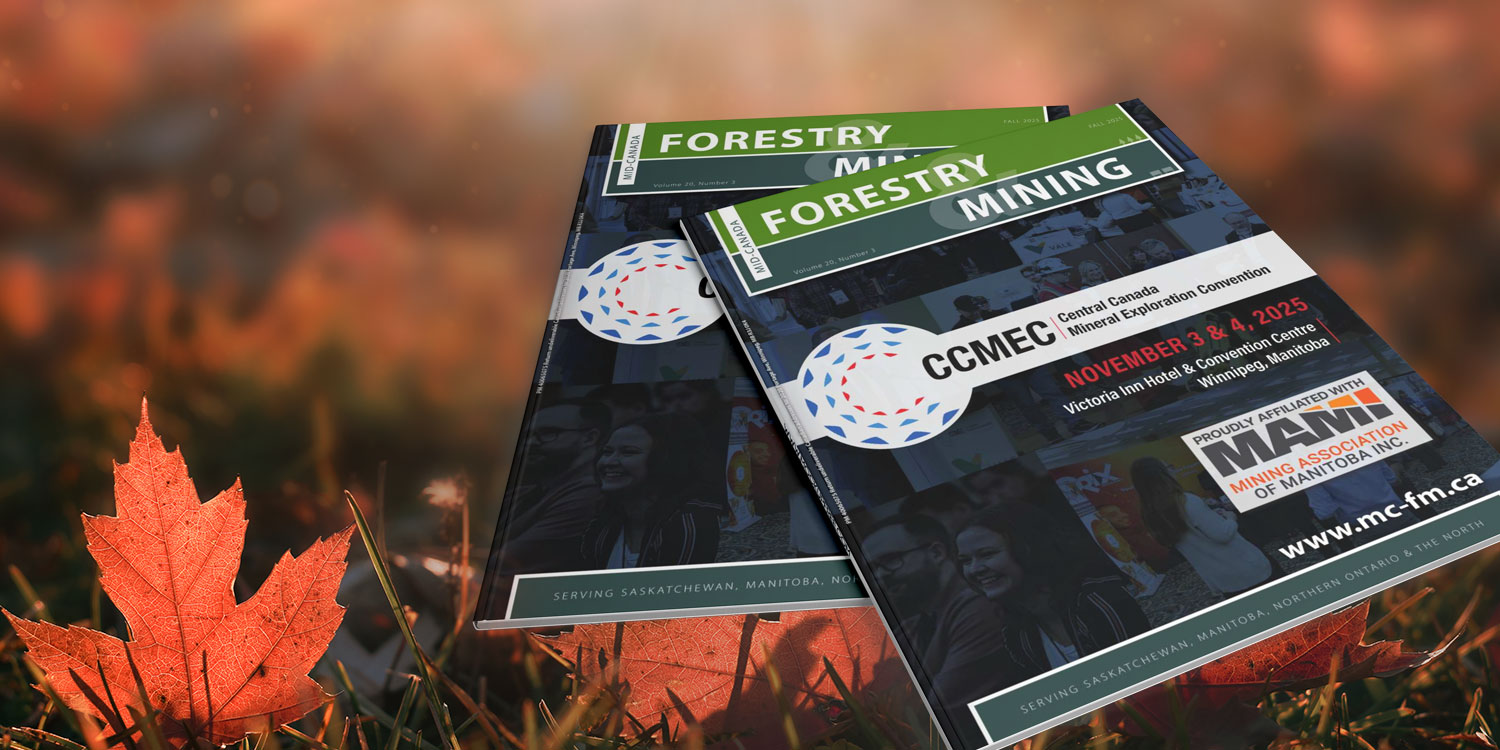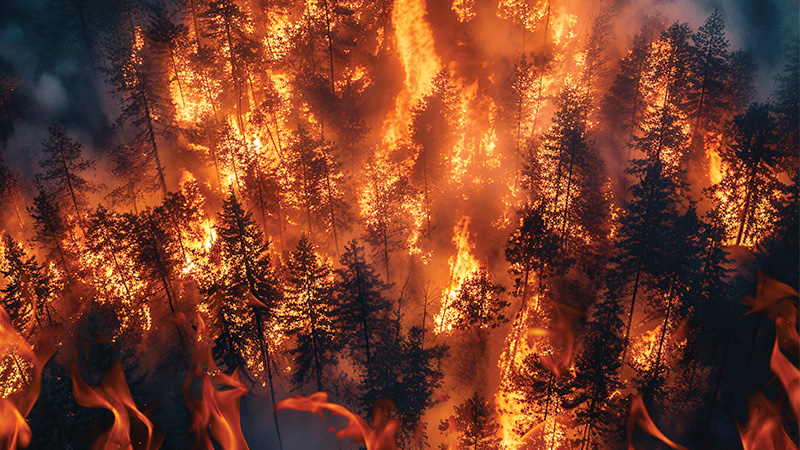Wildland fires in Canada are getting worse and becoming more frequent. In fact, according to a new report released by the Canadian Council of Forest Ministers (CCFM), the 2023 Wildland fire season saw approximately 15 million hectares of land burned during the wildland fire season.
The total amount of land is about three times the size of Nova Scotia, an amount surpassing the 1989 record of 6.7 million hectares, and more than seven-times the average of the past 10 years.
CCFM’s report, the Canadian Wildland Fire Prevention and Mitigation Strategy (the Strategy) was released on June 5, when CCFM’s Federal, Provincial, and Territorial forest ministers met in-person in Cranbrook, BC, to discuss shared priorities, common challenges, and emerging opportunities in Canada’s forest sector.
The Strategy was formed around discourse at the Canadian Dialogue on Wildland Fire and Forest Resilience (the Dialogue), held by CCFM in 2022. This event brought together representatives from approximately 100 organizations across society including Indigenous leaders, firefighting agencies, public safety organizations, municipalities, researchers, forest industry representatives, and more. The purpose of the Dialogue was to develop the foundational elements of a whole-of-society Strategy, and to kick-start new connections and partnerships that would form the basis of new initiatives.
One of the key takeaways: The time for change is now. Wildland fire management in Canada needs to be transformed, but this can only be achieved by taking a more proactive approach to preventing and mitigating risks before they occur.
Prevention and mitigation are crucial pillars in wildland fire risk reduction. Prevention decreases the chance a wildfire will occur, while mitigation reduces the impacts of wildland fires that cannot be prevented.
The challenge presented by the risk of severe and increasing wildland fires impacts everyone, CCFM claims, requiring whole-of-society solutions. According to the Strategy, the whole-of-society approach includes:
• All federal, provincial, territorial, municipal and self-governments
• First Nations, Métis and Inuit communities, organizations, and businesses
• Private sector, including (but not limited to) the construction and insurance sectors
• Non-governmental organizations
• Schools and academia
• Community groups and clubs
• Individuals
“The health and resiliency of our forests has never been more important, and we know that as a country we must adapt to climate change and the growing threat of wildfire,” said the Honourable Bruce Ralston, CCFM Chair and BC Minister of Forests. “The Canadian Wildland Fire Prevention and Mitigation Strategy is a whole-of-society call to action that ensures our forests and communities are more resilient for future generations.”
The Strategy calls on Canadians to mobilize to reduce wildland fire risk, and to inform, empower, and equip citizens, communities, businesses and the private sector to proactively reduce their risk from wildland fire. The CCFM states that wildland fire management agencies cannot achieve a resilient future alone. No matter how large or small the activity, every sector and individual has a role to play. The organization is calling on all sectors of society to participate in the Strategy to build a Canada with greater resilience to wildland fire.
“This strategy reaffirms our commitment to keeping communities safe by our recent investments across the country, for example, through the Wildfire Resilient Futures Initiative and the Fighting and Managing Wildfires in a Changing Climate Program,” said the Honourable Jonathan Wilkinson, Minister of Energy and Natural Resources. “By working together, we can inform, empower and equip Canadians to reduce their risk from wildland fires, lessening the impacts and protecting our beautiful landscapes for future generations.”
The Strategy will be implemented in close coordination with the federal National Adaptation Strategy (NAS), which aims to reduce the impacts of climate-related disasters, improve health and well-being, protect and restore nature and biodiversity, build and maintain resilient infrastructure, and support the economy and workers. This means the Strategy will actively contribute to the following NAS Disaster Resilience System wildland fire targets:
• Wildfire Risk Awareness By 2025, 60% of Canadians in areas of high wildland fire risk are aware of the risks facing their household.
• Proactive Measures By 2025, 50% of Canadians have taken concrete actions to better prepare for and respond to climate change risks facing their household.
• Community Wildland Fire Prevention and Mitigation Plans Communities in zones of high-risk develop community wildland fire prevention and mitigation plans by 2030, with up to 15% implemented by 2028.
Forest Products Association of Canada (FPAC), the organization that advocates for Canada’s wood, pulp, paper, and wood-based bioproducts producers, welcomed this proactive strategy.
“Canada’s 2023 wildfire season was our most devastating in history – scorching roughly 25 times the forested land base relative to what Canada’s Registered Professional Foresters would harvest and renew across the country in an entire year,” said Derek Nighbor, President and CEO at FPAC. “Beyond the devastation, these fires caused they also served as a wake-up call for us to be more proactive in managing our forests and fire risks into the future.”
He added: “FPAC supports this week’s announcement by CCFM which puts a point on the urgency, but details will matter. We must look at land planning and forest management through a fire lens in this country. That includes accelerating and increasing investments in fire shed mapping, supporting more active thinning and community fire-proofing, and establishing a clear national effort to find valuable uses and markets for low-grade wood and biomass.”
The Canadian Council of Forest Ministers was established in 1985 to provide a platform for federal, provincial and territorial governments to work together on common concerns relating the forests. The CCFM provides leadership on national and international issues and sets direction for the stewardship and sustainable management of forests across Canada.
References
Canada’s Forest Sector Welcomes New National Wildland Fire Strategy. (2024, June 7). FPAC.ca. Retrieved from www.fpac.ca/posts/canadas-forest-sector-welcomes-new-national-wildland-fire-strategy.
Canadian Council of Forest Ministers. (2024, June 5). Canadian Wildland Fire Prevention and Mitigation Strategy: Taking Action Together. www.ccfm.org/wp-content/uploads/2024/06/CWFPM-Strategy-EN-2024-06-05-FINAL-_V09.pdf.
Canadian Council of Forest Ministers Release the Canadian Wildland Fire Prevention and Mitigation Strategy. (2024, June 5). CCFM.org. Retrieved from www.ccfm.org/news/ccfm-ministerial-communique-june-5-2024.
Government of Canada. (2024, June 3). Canada’s National Adaptation Strategy: Building Resilient Communities and a Strong Economy. Canada.ca.
www.canada.ca/en/services/environment/weather/climatechange/climate-plan/national-adaptation-strategy.html.


 1-866-985-9780
1-866-985-9780








